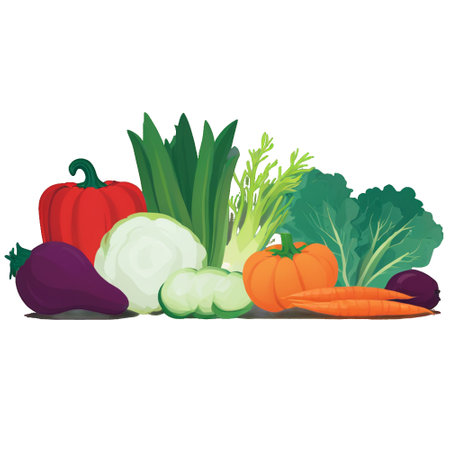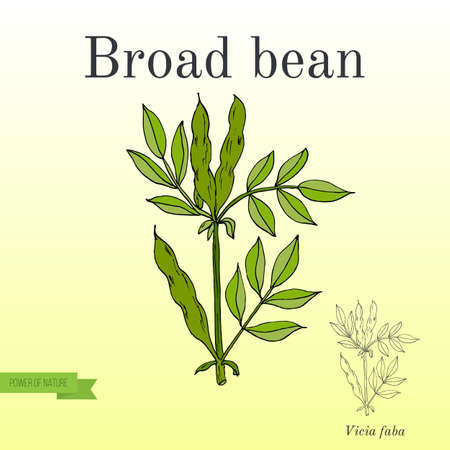The Joy and Tradition of Foraging in Britain
Foraging in the British countryside is a cherished tradition, steeped in history and woven deeply into the fabric of rural life. Wandering through woodlands, hedgerows, and meadows in search of wild plants has been a part of everyday living for generations. This time-honoured practice offers more than just a means to gather food; it provides a unique opportunity to slow down, observe the changing seasons, and reconnect with the land. From bramble-laden lanes bursting with blackberries to ancient forests dotted with wild garlic, the British countryside is alive with edible treasures waiting to be discovered. Foraging encourages us to move mindfully, tuning into nature’s subtle cues and rhythms. Beyond its practical benefits, this activity nurtures a sense of well-being and balance, fostering an appreciation for local biodiversity and the rich cultural heritage that comes from living closely with the land. Whether you’re gathering elderflowers for cordial or nettles for soup, each outing becomes a gentle reminder of our connection to the natural world and the joys found in simple, sustainable living.
Common Wild Edible Plants: How to Identify Them Safely
Foraging in the British countryside is an enriching way to reconnect with nature, but it’s essential to approach wild plants with care and responsibility. The UK is home to a variety of edible species, each with its own unique features and benefits. Below, you’ll find guidance on identifying some of the most common and useful wild plants, alongside advice for avoiding toxic lookalikes and respecting the local ecosystem.
Key Edible Wild Plants in the UK
| Plant Name | Main Features | Lookalike Warning | Best Foraging Season |
|---|---|---|---|
| Wild Garlic (Ramsons) | Broad, pointed leaves; strong garlic scent; white star-shaped flowers | Lily of the Valley (toxic, no garlic smell) | March – May |
| Nettle (Urtica dioica) | Serrated, pointed leaves; stinging hairs; grows in clumps | Dead-nettle (safe but less nutritious) | April – September |
| Elderflower (Sambucus nigra) | Creamy-white flower clusters; dark green, serrated leaves; distinctive fragrance | Dwarf Elder (milder toxicity) | May – June |
| Blackberry (Rubus fruticosus) | Thorny brambles; pink/white flowers; glossy black berries when ripe | Dogwood berries (toxic, red not black) | August – October |
| Dandelion (Taraxacum officinale) | Lobed leaves close to ground; bright yellow flowers turning into seed clocks | Cat’s Ear (edible), but always double-check flowers and leaves | March – October |
| Hawthorn (Crataegus monogyna) | Deeply lobed leaves; white or pinkish flowers; red haws in autumn | Blackthorn (sloes are edible, but leaves differ) | May (flowers), September – November (berries) |
Tips for Safe Identification and Harvesting
- Smell and Texture: Use your senses. Many edible plants like wild garlic have unmistakable scents. If unsure, don’t taste.
- Avoid Busy Roads: Harvest away from pollution sources such as roadsides or industrial land.
- ID Books & Apps: Always carry a reliable field guide or use trusted foraging apps specific to British flora.
- Tread Lightly: Take only what you need, leaving plenty for wildlife and plant regeneration.
Distinguishing Edibles from Lookalikes
The key to safe foraging lies in careful observation. Many edible plants have toxic doppelgängers—such as wild garlic vs. lily of the valley—so pay close attention to leaf shape, scent, flower structure, and habitat. Never consume a plant unless you are 100% certain of its identity. When in doubt, consult local experts or join a guided foraging walk with an experienced leader.
Respecting Local Ecosystems
The British countryside thrives when foragers act responsibly. Stick to public footpaths and rights of way, seek permission if venturing onto private land, and avoid uprooting entire plants. Remember: sustainable foraging ensures these wild treasures remain abundant for everyone—including future generations—to enjoy.

3. Ethical and Sustainable Foraging Practices
Foraging in the British countryside is a deeply rewarding pursuit, but it comes with a responsibility to protect the land and its natural treasures for future generations. Before you set out with your basket, it’s crucial to be aware of UK foraging laws, conservation etiquette, and responsible harvesting techniques. This ensures that wild plant populations remain healthy and habitats are not disturbed.
Understanding UK Foraging Laws
In the UK, the law generally allows foraging for personal use on public land or with the landowner’s permission. However, there are important restrictions to note. It is illegal to uproot any wild plant without the landowner’s consent under the Wildlife and Countryside Act 1981. Additionally, certain protected species must never be picked or disturbed—always check local regulations and consult resources like Natural England if you’re unsure.
Conservation Etiquette
Respecting nature is key to ethical foraging. Stick to established paths where possible to avoid trampling delicate habitats, and avoid taking more than you need—leave plenty behind for wildlife and fellow foragers. Pay special attention during flowering or fruiting seasons, as these stages are vital for plant reproduction. Consider bringing a field guide to help identify less common plants that should be left untouched.
Responsible Harvesting Techniques
Adopt a mindful approach when gathering wild plants. Use clean, sharp tools to minimise damage to plants and only pick from abundant populations, taking no more than one-third of what you find. Avoid over-harvesting from any single area to maintain ecological balance. Finally, always fill in any holes and leave the spot as you found it—or better.
By following these ethical and sustainable foraging practices, you’ll ensure that your countryside adventures are both enriching and respectful of Britain’s precious natural heritage.
4. Harvesting Techniques and Seasonal Highlights
Foraging in the British countryside is an ever-changing adventure, with each season bringing its own treasures and rhythms. Understanding when and how to harvest wild plants ensures sustainability, safety, and a rewarding experience for both beginners and seasoned foragers.
Harvesting Etiquette: Respecting Nature
Always follow the ‘forager’s code’: only take what you need, leave plenty behind for wildlife and regrowth, and avoid protected or rare species. Use clean, sharp scissors or a small knife to minimise damage to plants, and always harvest from clean areas away from roadsides or polluted sites.
Seasonal Foraging Guide
The British seasons dictate what’s available to harvest. Here’s a handy guide to some common wild plants and the best times to gather them:
| Season | Wild Plants | Best Harvesting Methods |
|---|---|---|
| Spring | Wild garlic, nettles, young dandelion leaves | Pick tender leaves with gloves; snip stems above root to encourage regrowth |
| Summer | Elderflowers, meadowsweet, chickweed | Gently shake flowers to remove insects; collect early morning for peak aroma |
| Autumn | Blackberries, rosehips, hawthorn berries | Select fully ripe fruits; use baskets or containers that allow airflow |
| Winter | Sloes, chestnuts (late), pine needles | Harvest after first frost for improved flavour; wear gloves for prickly plants |
Practical Tips for Beginners
- Start with easily identifiable plants such as blackberries or wild garlic.
- If in doubt, leave it out—never consume anything you cannot confidently identify.
- Carry a small field guide or use reputable apps for plant identification.
- Avoid over-harvesting from a single patch; rotate your spots throughout the season.
Savouring Each Season’s Bounty
Taking time to observe seasonal changes deepens your connection with the land. Early spring greens offer freshness after winter’s lull, summer brings fragrant blossoms, autumn yields vibrant fruits, and winter reveals hardy evergreens. Embrace each phase with patience and respect—your foraging journey is as much about mindfulness as it is about gathering food.
5. Preserving the Bounty: Traditional British Methods
The joy of foraging in the British countryside doesn’t have to end with the last walk of autumn. Through centuries, Britons have developed a wealth of preservation techniques to ensure that wild plants can be enjoyed long after their season has passed. These methods—time-honoured and deeply woven into rural tradition—not only capture the flavours and nutrients of wild foods but also connect us to a slower, more sustainable way of living.
Drying: A Classic Approach
Drying is perhaps the oldest method for preserving herbs and edible flowers found along hedgerows and meadows. Wild mint, elderflowers, nettles, and even rosehips are hung in small bunches in airy, shaded spots or laid out on trays above an Aga or near a warm airing cupboard. Once dried, these botanicals can be stored in airtight jars to infuse teas or flavour stews throughout the winter months.
Pickling: Capturing Tangy Delights
Pickling is another cherished tradition in British kitchens. Wild garlic buds, young alexanders, or even dandelion roots are commonly transformed into tangy preserves using malt vinegar, mustard seeds, and peppercorns. The result is a zesty accompaniment to sandwiches or ploughman’s lunches—a true taste of the countryside at any time of year.
Making Cordials: Bottling Summer
Cordials are a beloved staple for many British families, especially when made with foraged elderflowers or blackberries. By simmering fruits or blossoms with sugar and water, then bottling the resulting syrup, you create a drink that captures summer’s essence. Cordials can be diluted with sparkling water for a refreshing treat or drizzled over puddings for an extra hint of wild sweetness.
Preserving for Wellbeing and Connection
Beyond practicality, these traditional methods offer moments of mindfulness and connection—to both nature and heritage. Whether tying bundles of herbs together or patiently waiting for pickles to mature, each step slows down life’s pace and fosters gratitude for nature’s generosity.
Keeping Traditions Alive
As you experiment with drying, pickling, or making cordials from your countryside finds, remember you’re participating in a living tradition—one that celebrates resourcefulness and honours the British landscape all year round.
6. Bringing Foraged Finds to Your Table
Once you’ve gathered your wild bounty, the real joy comes in weaving these flavours into everyday British fare. The countryside offers a rich larder, and foraged ingredients can add a touch of nostalgia and novelty to your meals, all while honouring seasonal rhythms and local culinary traditions.
Simple Ways to Start
Begin with familiar classics. Wild garlic leaves can be blitzed into a vibrant pesto or stirred through mashed potatoes for a rustic take on champ. Nettles, once blanched, make an earthy substitute for spinach in tarts or omelettes—perfect with a wedge of mature Cheddar and crusty bread. Elderflowers infuse syrups or cordials, lending their delicate aroma to summer puddings or drizzled over scones with clotted cream.
Seasonal Touches for Traditional Dishes
Spring’s young dandelion leaves are lovely tossed with olive oil and lemon as a salad alongside roast lamb. In autumn, blackberries become more than just jam—try them in a classic apple and bramble crumble, or muddled into gin for an after-dinner tipple. Mushrooms like chanterelles elevate creamy risottos or enrich hearty pies, echoing the heartwarming comfort of British home cooking.
A Nod to Preservation
Honour the old ways by preserving surplus finds: wild herbs can be dried for winter stews; hawthorn berries simmered into jelly; rosehips steeped for vitamin-rich syrup. These practices not only stretch your harvest but connect you to centuries of rural self-sufficiency.
Gathering Around the Table
Sharing dishes made with wild edibles brings people together in the spirit of community and curiosity. Whether it’s nettle soup at a family Sunday lunch or elderflower cordial at a picnic, each meal becomes a celebration of place and season—a mindful way to savour the countryside’s gifts while embracing the slow pleasures of British life.


